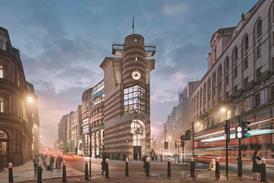- Home
- Intelligence for Architects
- Subscribe
- Jobs
- Events

2025 events calendar Explore now 
Keep up to date
Find out more
- Programmes
- CPD
- More from navigation items
Barbican Centre set for £10.1m upgrade package

City bosses eye funding for new restaurant space and safety improvements
A £10.1m package of upgrade work to the Barbican Arts Centre that will include a new restaurant, kitchen and event space is poised to be part of the City of London’s capital budget for the next financial year.
Urgent repairs to address health-and-safety concerns at the grade II-listed arts complex, completed in 1982, make up the lion’s share of funding identified in the plans, which are progressing through the City’s budget-setting process.
In addition to the repair work the proposals, as detailed by a report to the Barbican Centre board, also include £2.8m of work to redevelop the Barbican Centre’s kitchens, restaurants and events space to “provide a new restaurant, event space and improved kitchen facilities”.
…
This content is available to registered users | Already registered?Login here
You are not currently logged in.
To continue reading this story, sign up for free guest access
Existing Subscriber? LOGIN
REGISTER for free access on selected stories and sign up for email alerts. You get:
- Up to the minute architecture news from around the UK
- Breaking, daily and weekly e-newsletters
Subscribe to Building Design and you will benefit from:

- Unlimited news
- Reviews of the latest buildings from all corners of the world
- Technical studies
- Full access to all our online archives
- PLUS you will receive a digital copy of WA100 worth over £45
Subscribe now for unlimited access.






